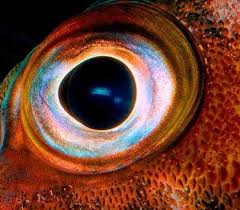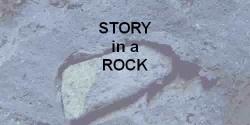Ring of Stone
Ring of Stone - Eye Ring of Ichthyosaurs
Eye Bones How we can talk about the eyes of something extinct? Well, the secret is what is called a sclerotic ring.
This doughnut shaped bone is embedded within the eyeball of most vertebrates, except mammals (like us), crocodiles, and some others.

Ichthyosaurs had exceptionally well-developed sclerotic rings, which is very good for us since we can take reliable measurements off them.

it is believed that the ring helps keep the eyes in shape.
Ichthyosaurs had very flattened eyeballs, so it could well be that the sclerotic ring was useful in keeping the eyeballs in shape.
There is another reason why shape-keeping may be necessary for ichthyosaurian eyes. When a fish-shaped object moves forward in water, some part of it is pushed by the surrounding water while the other parts are pulled. It is usually the front part of the fish that is pushed most strongly, and then there is no pull or push near the eye area.
So, it is probably beneficial to have a bony structure in the eyeball to keep its shape. This applies regardless of water depth.
Ichthyosaurs had enormous eyes. Yes, it is true. The largest ichthyosaurian eye measured so far is 264 mm across! This is the largest eye ever recorded for any animal. Much bigger than the eye of the blue whale.
Large eyes are excellent for getting a wide view or for working in low light conditions, such as at night or a great depth.
The two images above were from specimens collected by Earth Science Australia and are from a 110 million year old Ichthyosaur, donated to the Queensland Museum "Kronosaurus Korner" in Richmond, Queensland Australia.
If you discover a good fossil, be a good citizen and donate it to a museum or university so it becomes part of the Natural Heritage of all Australians , to be studied and enjoyed by all, forever more.
Learn more about ICHTHYOSAURS and ICHTHYOSAUR EYES

